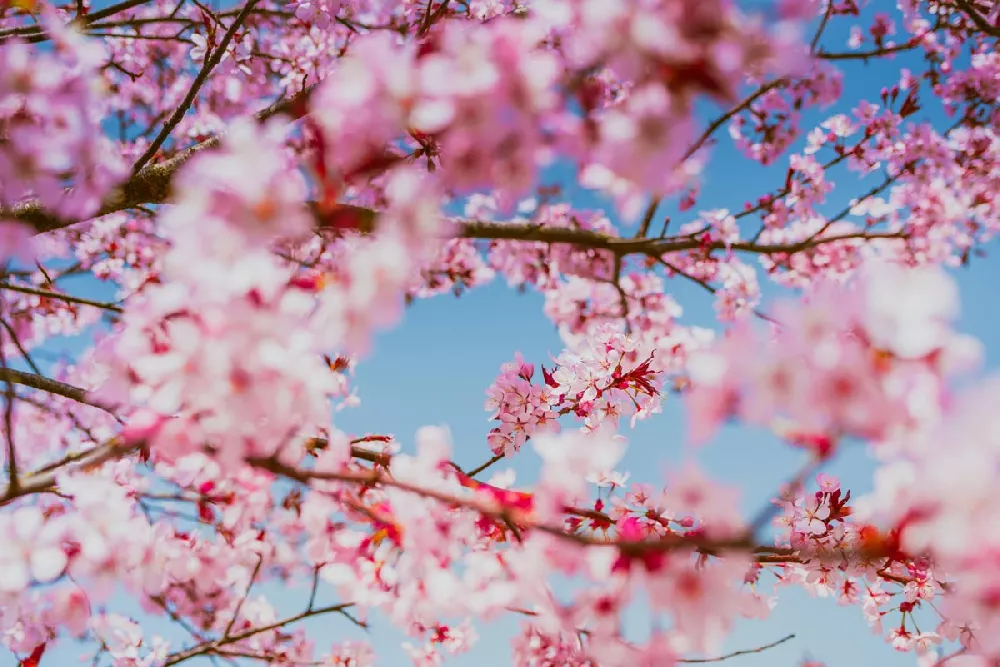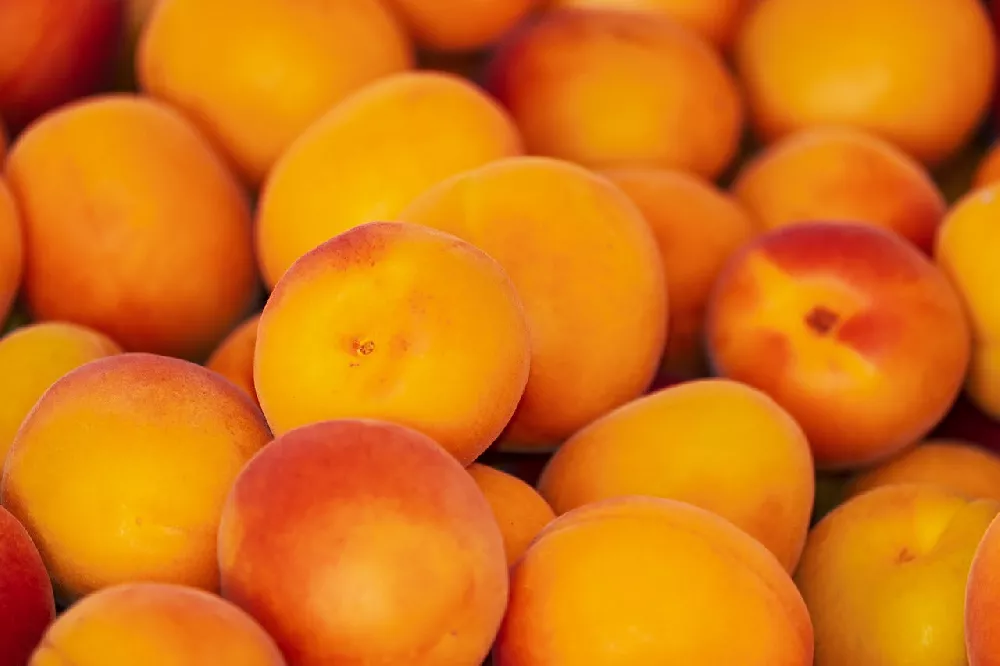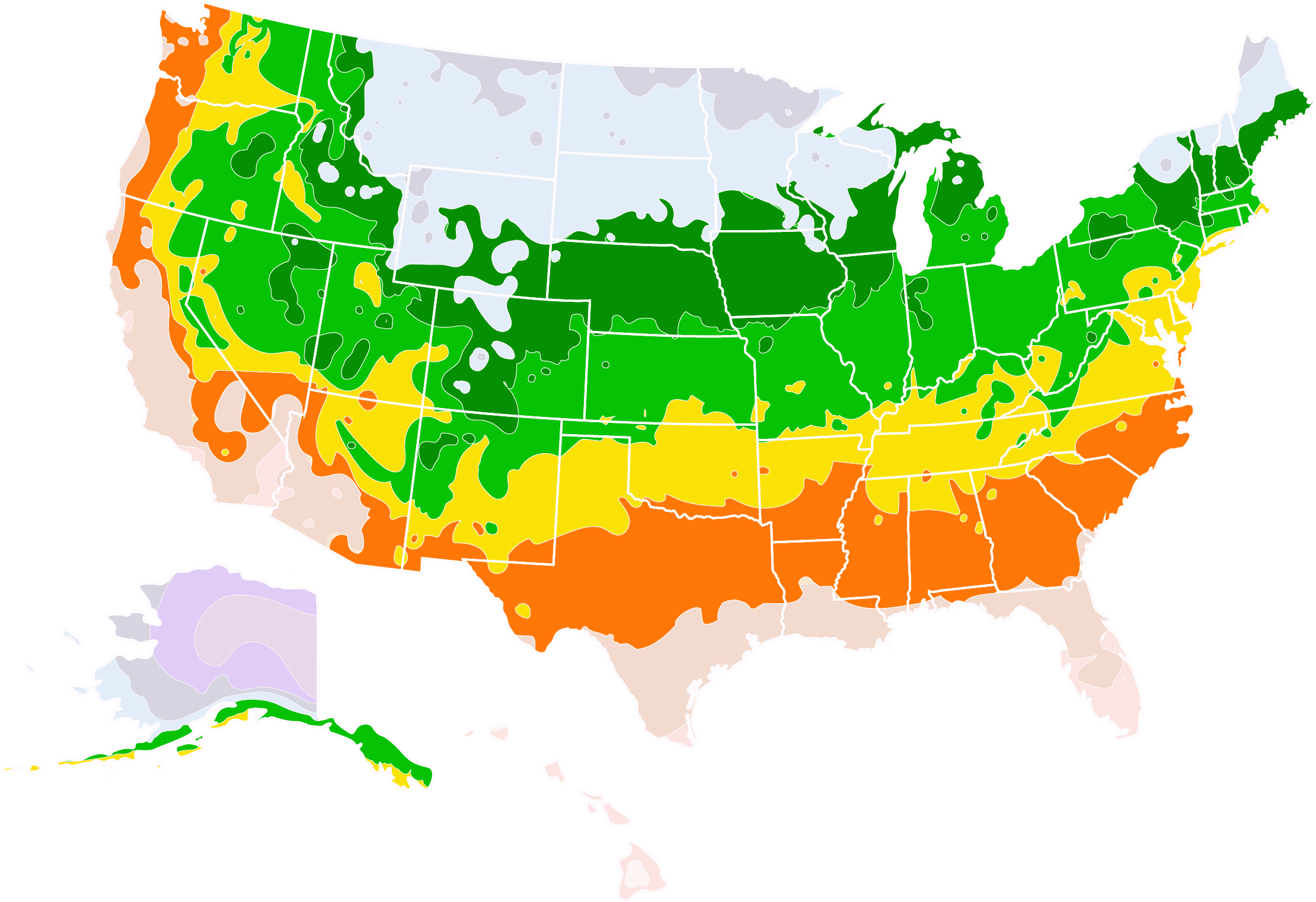- Home >
- Cherry Trees >
- Rainier Cherry Tree
Rainier Cherry Tree for Sale - Buying & Growing Guide
- Ships in 1-2 days
- 1-Year Warranty Eligible
- Pots or accessories are not included unless specified in the product options.
Shipping Details:
Once your order is shipped, you’ll receive an email with a tracking number and estimated delivery date. Most orders ship immediately, but some items are seasonal and may only ship in spring or fall. These products are noted on the website.
If you are a gardener living in hardiness zones 5 through 8 and you want to add a high-producing fruit tree to your yard, then the Rainier cherry tree, or Prunus avium 'Rainier,' should be the next plant you add to your garden. This tree shows great versatility; it can adapt to many growing locations. It is also known to produce a very high volume of cherries relatively early in the year. Those cherries also prove to be some of the sweetest in existence.
- The Rainier cherry tree develops a large harvest of very sweet cherry fruits.
- It is adaptable to many growing locations.
- It provides cherries earlier in the year than other cherry trees.
Plant Care
Sunlight

For the best results, plant this tree in full sunlight.
Watering
Water about once every two weeks during the growing season.
Fertilizing

Fertilize in spring before the flowers bloom using a low-nitrogen fertilizer.
Planting and Care
Planting instructions
To plant a Rainier cherry tree, you should begin by digging a hole that is as deep as the tree’s root ball is tall and at least twice as wide as the root ball. Place your tree in that hole and check to ensure the root flare rests at or just above the soil’s surface. Then backfill the hole and cover the area with mulch to maintain soil moisture and suppress weeds. Ideally, the growing location you choose will receive full sunlight and have well-draining soils.
Watering and nutrients
Typically, you should water your Rainier cherry tree about once every 10 to 14 days during the growing season. Of course, you should plan to increase this rate if you experience a heat wave, a drought, or any other circumstance in which the soil appears to dry out more quickly than normal. By contrast, if your tree receives at least an inch of natural rainfall, you can hold off on watering for another 10 to 14 days. The best way to feed this tree is to apply a low-nitrogen fertilizer in the early spring, about two weeks before the blooms.
Pollination
Like other cherry trees, the Rainier cherry tree is not only valuable for the fruits it produces, but it also blooms with lovely flowers in spring. However, while this plant has plenty of flowers, it is not a self-fertile species. That means you’ll need to find a companion plant that can facilitate cross-pollination and allow for fruit development. Fortunately, there are many trees that can play this role, including the Montmorency cherry tree, the Bing cherry tree, and the Stella cherry tree.
Pruning
Early spring is the correct time to prune your Rainier cherry tree. When pruning, be sure to use a set of pruning tools that are both sharp and sterile to ensure clean cuts and to reduce the chance that you’ll spread disease to your plant. Your pruning goals should include removing any part of the tree that is dead, damaged, or diseased. You should also prune to encourage horizontal branches, as those branches are typically the strongest and most capable of bearing lots of fruit.
Pests, diseases, and animals
Most gardeners who decide to raise cherry trees in their yards will need to remain vigilant regarding pests and diseases. Unfortunately, the Rainier cherry tree can be quite vulnerable to both issues. Some of the most common diseases for a cherry tree include cherry leaf spot, powdery mildew, brown rot, and canker. On the infestation side, there is a possibility that slugs, mites, leaf miners, borers, and Japanese beetles could damage your Rainier cherry tree’s health.
Harvesting
One of the advantages of growing the Rainier cherry tree is that you won’t need to wait too long before you can harvest some fruits. Usually, the harvest time for this plant will occur between May and June. During that time, few other cherries are even close to offering fruit. When ripe, the cherries on a Rainier cherry tree will be mostly yellow while showing shades of light red. Removing these fruits is easy to do as well, making for an early and easy harvest.
Achieving maximum results
One important tip to remember when growing a Rainier cherry tree is to avoid fertilizing this plant too late in the season. Fertilizing in the summer or fall will cause this plant to put forth new growth that will likely die as soon as the first frost arrives, which will diminish the overall health of this plant. It’s also important to avoid high-nitrogen fertilizers. These blends tend to encourage leaf development rather than the fruit development you’re likely looking for.
FAQs
What do Rainier cherries taste like?
Part of the reason that the Rainier cherry tree is so popular is the flavor of its fruits. These fruits have a lower level of acidity than other cherry trees, which allows them to hold more sugars in place of that acid. This ratio of sugar to acid makes for a very sweet cherry that nearly everyone can enjoy. The other advantage to Rainier cherries is that they arrive earlier in the year than those of any other cherry tree.
Is the Rainier cherry tree a fast-growing tree?
The Rainier cherry tree is not a fast-growing species. Instead, it grows at a slow or moderate pace as it works towards its mature height of 10 to 15 feet tall. This slower growth makes for a tree that is easy to maintain, as it will not spread quickly and overcrowd your garden. Additionally, it can take a few years before this tree can bear fruit. Most Rainier cherry trees are about 4 or 5 years old before they can develop fruit.
How did the Rainier cherry tree get its name?
The Rainier cherry tree is a cultivated plant that came into being at Washington State University. It gets its name from Mount Rainier, a tall peak that resides in the same state. The Rainier cherry tree resulted from a cross between the Bing cherry tree, which is also one of the most popular cherry trees in existence, and the Van cherry tree.
Compare Similar Products
You can't add more Product Name - Product size to the cart.
OK









